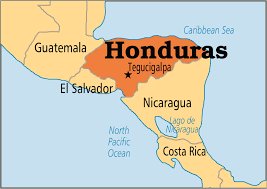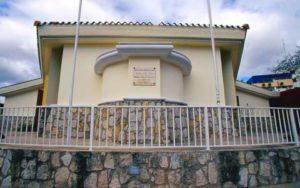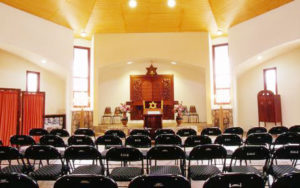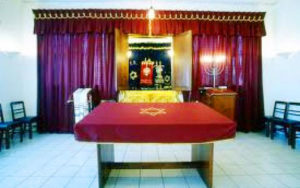 The first migration of Jews to Honduras was probably in the form of Conversos, or Jews forced to convert to Christianity who secretly continued to practice Judaism, who went to Honduras with Christopher Columbus. This population is uncertain, however, and true migration of Jews to Honduras began in earnest in the late 1800s, mostly from Central Europe.
The first migration of Jews to Honduras was probably in the form of Conversos, or Jews forced to convert to Christianity who secretly continued to practice Judaism, who went to Honduras with Christopher Columbus. This population is uncertain, however, and true migration of Jews to Honduras began in earnest in the late 1800s, mostly from Central Europe.
At the end of the 1800’s Honduras experienced an influx of Jews. The majority emigrated from the Central European regions of Russia, Poland, Germany, Romania, and Hungary, while a few were of Sephardic origin, and came from Greece, Turkey and North Africa.
 A small number of European immigrants, some of whom came via other south American countries and Mexico, began to arrive in Honduras around 1920, when the Honduran government announced its willingness to welcome numerous Jewish educators and professionals from Europe. It was at this time that the two distinctive Jewish communities of Tegucigalpa and San Pedro Sula, which still exist today, were established, and Judaism began to make an imprint on Honduran history and culture.
A small number of European immigrants, some of whom came via other south American countries and Mexico, began to arrive in Honduras around 1920, when the Honduran government announced its willingness to welcome numerous Jewish educators and professionals from Europe. It was at this time that the two distinctive Jewish communities of Tegucigalpa and San Pedro Sula, which still exist today, were established, and Judaism began to make an imprint on Honduran history and culture.
In 1928, another five families came from Poland. A community was not established, until the arrival of some refugees from Germany. In 1935 the government announced its readiness to accept Jewish scientists and educators from Germany, but the offer was not adequately exploited.
 In 1939 restrictions were imposed on the entry of Jews. Nevertheless a considerable number of Jews were saved during the war by Honduran consuls who issued them passports and visas, frequently illegally. Roughly 20 Jewish doctors and farmers, predominately German Jews, managed to obtain special permits to enter and work in Honduras.
In 1939 restrictions were imposed on the entry of Jews. Nevertheless a considerable number of Jews were saved during the war by Honduran consuls who issued them passports and visas, frequently illegally. Roughly 20 Jewish doctors and farmers, predominately German Jews, managed to obtain special permits to enter and work in Honduras.
By 1947 there were 129 Jews in the country, and another 64 arrived the following year, a number that rapidly declined due to intermarriage and lack of Jewish education. Throughout the 1950’s there were an estimated 30 Jewish families living in the city of Tegucigalpa, led by Salomon Schacher. The Tegucigalpa Jewish community assisted in the development of the tourist industry by building hotels, offering better services to visitors, and helping the city to prosper. In San Pedro Sula, another Jewish community was formed, headed by Mr. Boris Goldstein, who donated the land for the synagogue and the cemetery. Mr. Jose Brandel was the religious leader, and Jacob Weizenblut later became the first Honorary Consul of Israel to San Pedro Sula.
 During the next two decades Jews emigrated from Honduras, and a census taken in 1967 found 86 Jews in Tegucigalpa, the capital. Twenty-two of the 42 children aged 1-17 were the offspring of intermarriages. In the 70’s and early 80’s a large group of Israelis came to Honduras to work in engineering, agriculture and security. They brought along their families and a Jewish way of life. In that same period, the Honduras Israel Cultural Institute was created by Hondurans who had spent a period of time in Israel and returned with a better understanding of the country and of the Jewish heritage.
During the next two decades Jews emigrated from Honduras, and a census taken in 1967 found 86 Jews in Tegucigalpa, the capital. Twenty-two of the 42 children aged 1-17 were the offspring of intermarriages. In the 70’s and early 80’s a large group of Israelis came to Honduras to work in engineering, agriculture and security. They brought along their families and a Jewish way of life. In that same period, the Honduras Israel Cultural Institute was created by Hondurans who had spent a period of time in Israel and returned with a better understanding of the country and of the Jewish heritage.
In the last 15 years there has been a resurgence of Jewish life and both communities are very active. They have Kabbalat Shabbat services, celebrate Jewish festivities, keep Jewish customs, and hold activities for the children. There is a private Jewish cemetery. There are two synagogues, one in Tegucigalpa and the other in San Pedro Sula. In 1998, Honduras was devastated by Hurricane Mitch, however, Jewish communities that learned of the destruction contributed money to restore this temple.
Today, the Jewish community of Honduras is located primarily in Tegucigalpa and San Pedro Sula. There are at present about 50 Jewish families in Honduras affiliated with these two communities and another 20 or so individuals are its floating population.